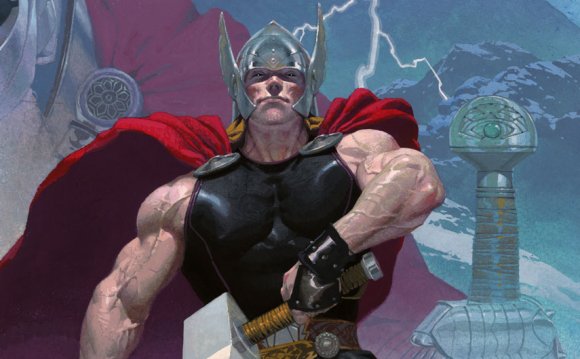
Compiled by D. L. Ashliman. Copyright 1999. Return to
- Asa-Thor
- Ása-Thór
- Donar
- Donner
- Thor
- Thór
- Thunder
- Tor
- Þor
- English: Thursday, Thunderday
- Old English: Thuresdæg, Thursdæg, Thunresdæg
- German: Donnerstag
- Old High German: Donares-tac
- Dutch: Donderdag
- Danish, Norwegian, Swedish: Torsdag
- Faroese: Tórsdagur (local); Hósdagur
- Old Icelandic, Old Norse: Þórsdagr
- Modern Icelandic: Fimmtudagur [fifth day]. After Iceland became Christian most of the older heathen day names were replaced with numbered day names.
- French: Jeudi
- Latin: Jovis dies [Jove's day]
Photographs of Artifacts
- Thor's hammer amulets. About 50 amulets shaped like Thor's hammer have been discovered in the modern era. This site features photographs of a representative sample of these important symbolic items.
- Thor's Hammer / Christian Crucifix Mold. This tenth-century soapstone mold, found at Trendgården, Jylland, Denmark, could be used to cast either heathen or Christian amulets. Numerous sagas and historical accounts refer to the conflict between heathenism and Christianity, The hammer and the cross were very important symbols in this conflict, and the silversmith or goldsmith who used this mold could satisfy customers of either faith.
- The Blue Belt. A folktale from Norway, collected in the mid nineteenth century by Peter Christen Asbjørnsen and Jørgen Moe. The magic belt in this tale is reminiscent of the Norse god Thor's belt of strength as described in The Prose Edda of Snorri Sturluson.
Please check back soon for more information about Thor.
Return to Revised September 27, 1999.
Source: www.pitt.edu









